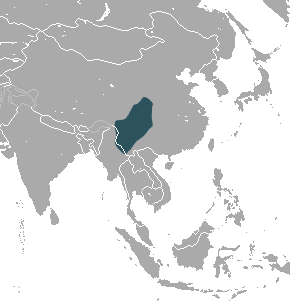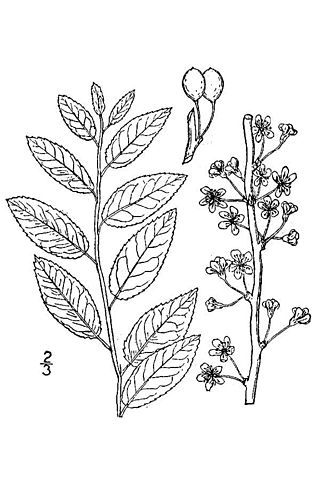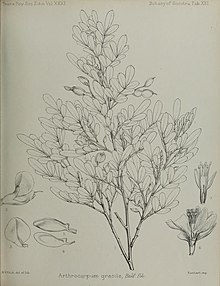
Nepenthes gracilis, or the slender pitcher-plant, is a common lowland pitcher plant that is widespread in the Sunda region. It has been recorded from Borneo, Cambodia, Peninsular Malaysia, Singapore, Sulawesi, Sumatra, and Thailand. The species has a wide altitudinal distribution of 0 to 1100 m above sea level, although most populations are found below 100 m and plants are rare above 1000 m. Despite being a widespread plant, natural hybrids between N. gracilis and other species are quite rare.
The slender harvest mouse is a species of rodent in the family Cricetidae. It is small and mouse-like and is distributed throughout a portion of Central America.

Chapmannia is a genus of flowering plants in the family Fabaceae. It contains seven species with a scattered distribution – Mexico, Guatemala, Florida, and Venezuela in the Americas, and Somalia and Socotra in eastern Africa. The genus was recently assigned to the informal monophyletic Pterocarpus clade of the Dalbergieae.
Chapmannia reghidensis is a species of flowering plant in the family Fabaceae. It is endemic to northern Socotra in Yemen. Its natural habitat is subtropical or tropical dry forests. It is threatened by habitat loss.
Chapmannia sericea is a species of flowering plant in the family Fabaceae. It is endemic to western and southwestern Socotra in Yemen. Its natural habitat is rocky areas.
Chapmannia tinireana is a species of flowering plant in the family Fabaceae. It is endemic to north-central Socotra in Yemen. Its natural habitat is subtropical or tropical dry forests. It is threatened by habitat loss.
Coursetia gracilis is a species of flowering plant in the family Fabaceae. It is found only in Ecuador. Its natural habitat is subtropical or tropical dry shrubland.

The Talamancan small-eared shrew is a species of mammal in the family Soricidae. It is found in Costa Rica and Panama.

The gracile shrew mole is a species of mammal in the family Talpidae. It is endemic to China; populations known from Myanmar likely represent other species.
Aglaia gracilis is a species of plant in the family Meliaceae. It is endemic to Fiji.
Gentianella gracilis is a species of plant in the Gentianaceae family. It is endemic to Ecuador. Its natural habitat is subtropical or tropical high-altitude grassland.
Horsfieldia gracilis is a species of plant in the family Myristicaceae. It is a tree endemic to Borneo.
Nectandra gracilis is a species of plant in the family Lauraceae. It is found in Ecuador and Peru.
Pearcea gracilis is a species of plant in the family Gesneriaceae. It is endemic to Ecuador. Its natural habitat is subtropical or tropical moist montane forests.
Polyscias gracilis, commonly known as bois papaye, is a species of plant in the family Araliaceae. It is endemic to Mauritius.
Pouteria gracilis is a species of plant in the family Sapotaceae. It is endemic to Peru.
C. gracilis may refer to:

Aloiampelos gracilis, formerly Aloe gracilis, the rocket aloe, is a succulent plant, endemic to dry thicket vegetation around the city of Port Elizabeth, South Africa. Its natural range lies just to the west of the related Aloiampelos ciliaris, and it occurs in bushy fynbos and dry thickets, and clustered on rocky outcrops at all altitudes. Its range extends westwards into the Baviaanskloof mountains.

Prunus gracilis, called the Oklahoma plum, sour plum, and sand plum, is a species of Prunus native to the south-central United States.
Diplotaxis gracilis is a species of wall rockets that belong to the family Brassicaceae. The species is endemic to Cape Verde and is listed as endangered by the IUCN. The plant was named by Otto Eugen Schulz in 1916. The local name of the plant is mostarda-brabo.







